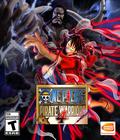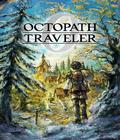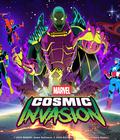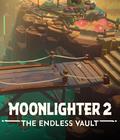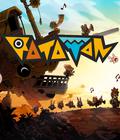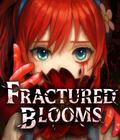Like a few indie games before it, Ratatan was born out of perceived necessity. Fans were clamoring for a sequel to Sony's Patapon series since the third entry hit the PSP. The series creators were waiting for Sony to give the green light on the project. When that didn't look like it was going to materialize, and with the Japanese PlayStation studio focused squarely on Astro Bot, Ratatan looked like the next best thing to a new sequel. Funny enough, the Early Access version of the game came at a time when the HD remakes of the first two Patapon games were released on multiple platform storefronts.
There's already a short story in the game. Far off in the middle of the sea lies the island of Rataport. The island is peaceful, but everyone has the dream of meeting The Goddess, who lives in The Everafter. With that dream ever-present, the Ratatan and their Cobuns embark on a near-endless journey to find The Everafter to meet The Goddess. The story is simple, and the current build doesn't expand the story beyond that premise, but it is a good start for the adventure.
If you're already familiar with how Patapon played, you'll have a good idea of how Ratatan plays. You indirectly control the Cobuns, who have different attack patterns and behaviors depending on the equipment they carry. Using various button combinations, you can command them to deliver different types of attacks, move them to certain locations, put up their guard, or jump away from incoming beams. The trick is that the button combinations are more effective if you play them at a specified rhythm. Performing enough good combos in a row enables a fever mode, where the attacks and moves are made even more powerful for as long as that mode lasts. This is a strategy game with a heavy rhythm element, so it's distinct from the separate strategy or rhythm genres.
There are a few tweaks to the combat formula that significantly change the game. The game uses a three-note system instead of a four-note system. When compared to almost any other rhythm title, this is an odd choice. The lack of a fourth beat also gives the sense that you have a limited arsenal, since the number of potential note combinations has been reduced. Even if you only used a small number of moves in Patapon, it's a little disheartening that the limitation is now by design. There's still plenty of time to see if the move limitation was the right choice in the back half of the game.
The second major change has to do with your army. You now have direct control over a hero character who cannot perform any attacks but is crucial in staying alive. You can jump around, but that's about it for the time being. Those hoping for someone who can directly do something on the field will be disappointed, but the presence of a hero does mean that the game becomes more complicated. As if to alleviate that burden, the Cobuns you command can still die, but they also get resurrected after some time, so you won't be left in a completely defenseless state for very long.
The next major change to the combat is optional: the presence of multiplayer. The feature is only for online, play but you can play co-op with up to three other players as you go through the campaign together. The game tries to balance out difficulty with the higher player count, and while there is still some work that needs to be done, the prospect of playing with others in a co-op rhythm adventure game is exciting because so few games in the space go beyond solo play. (Crypt of the Necrodancer did two-player co-op all those years ago.) We tried to get multiplayer going during our preview time with the game, but there were enough connection issues that we'll wait for those to get ironed out before trying again.
The modifications to the combat are only half the story, as the game has transformed from a straightforward adventure to a roguelike. Surviving watch battle gives you the chance to choose cards that represent boons for your party. Some give you basic stat upgrades, while others let you access special elemental powers, such as freezing an enemy if you use Hustle Tech attacks instead of normal ones. You can also get items like candy and donuts, which won't play a direct role in the fight but act as currency for troop upgrades in future runs. The same holds true for weapons you find on the field, which also ensure that your troops are better for future runs. The move is a double-edged sword, as it means that there's replayability due to how different each run can go, but it also means that you'll be doing some real grinding before you can make significant progress in your journey.
You can get a ton of characters on-screen at once, especially if you're playing in multiplayer, so it can be very easy to lose sight of your hero since they're barely bigger than the Cobuns. The act of moving your character while also paying attention to the beats to issue the correct commands can get overwhelming. It means trying to divide your attention across several different spots, which can be even more difficult when you're trying to read the attacks of the large bosses.
The Early Access version of the game gives you a decent amount of content to play, but it's still incomplete. There are only five worlds present, and there's no real ending yet. Looking at the roadmap, there are a ton of things being added, so there's a very good chance that the final game will be significantly different from this version, especially if the team keeps taking player feedback into account. The good news is that the game seems to have been improving through a fair number of patches since the Early Access release.
The presentation is pretty brilliant. The music is bouncy and provides an upbeat vibe, which feels easy to work with as far as getting one's rhythm down. The voice acting is overly cheery, even if what you're hearing only sounds slightly familiar. The effects don't overwhelm the soundscape to the point that you lose the beat. Graphically, the game uses a complete palette that makes everything vibrant, while the animations for every character are smooth. The camera could use a bit of zoom-in, as there are moments when even the larger bosses can feel small since the camera is zoomed out too far.
While the graphics would normally be praiseworthy, their quality introduces some problems in readability, which was alluded to earlier given how busy the game mechanics can feel. Thanks to the multitude of colors on display and their vibrancy, it's easy to lose track of where your character is. Couple that with the fact that you're trying to pay attention to the timing chart at the bottom of the screen more than you're paying attention to the battlefield, and you may find moments when you won't realize that you're being hurt until you see the "game over" screen. This can be avoided once you get into the rhythm of the song and don't need the timing chart. Until then, the game can feel difficult since there's so much happening on-screen.
At the moment, Ratatan has the necessary tools to not only be a spiritual successor to Patapon but also be different enough to be recognized as its own thing. The shift from being strategic to action-based works, but it means that you need to quickly parse what's going on amidst the colors. The game's roguelike nature expands replayability atop the presence of multiple heroes to choose from. Online co-op creates an interesting wrinkle in a genre that has traditionally been restricted to solo affairs. We'll get a better idea of the game quality once more content starts to roll in, but for now, Ratatan does a good job of scratching the rhythm-action game itch.
More articles about Ratatan


